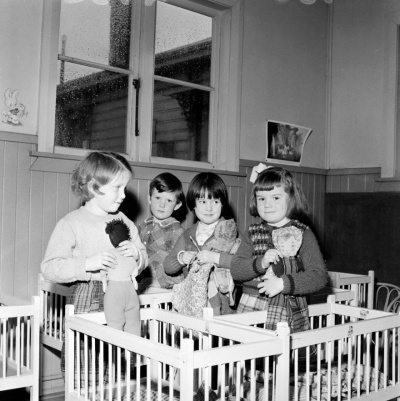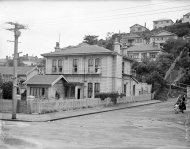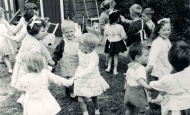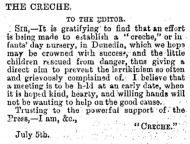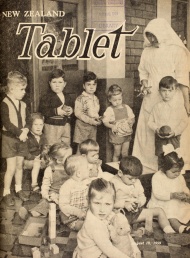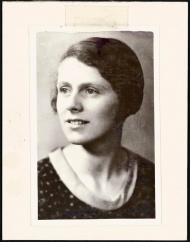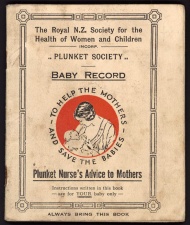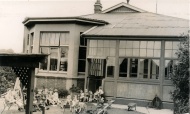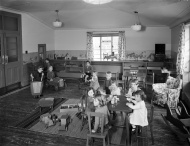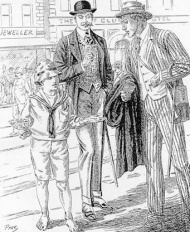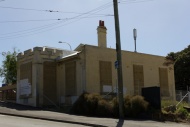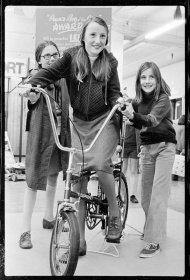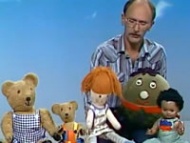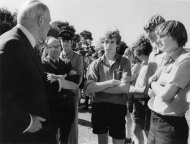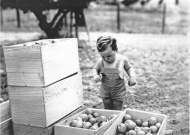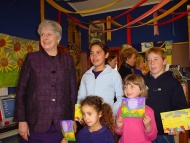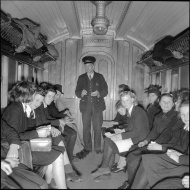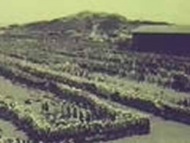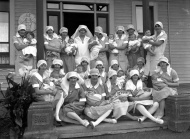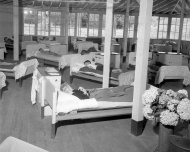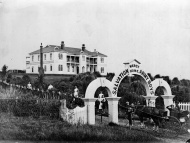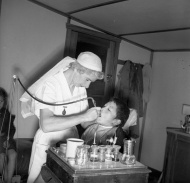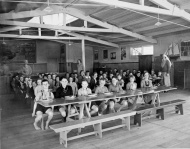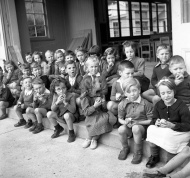Events In History
-
 20 September 1954Mazengarb report released
20 September 1954Mazengarb report releasedThe Mazengarb report into 'juvenile delinquency' blamed the perceived promiscuity of the nation's youth on the absence from home of working mothers, the easy availability of contraceptives, and young women enticing men into having sex. Read more...
-
 25 October 1949Foundation of IHC
25 October 1949Foundation of IHCA meeting in Wellington set up an interim committee for the Intellectually Handicapped Children's Parents' Association (IHCPA), the forerunner of IHC. Read more...
-
 12 August 1895Baby-farmer Minnie Dean hanged
12 August 1895Baby-farmer Minnie Dean hangedIn 1895 Minnie Dean became the first (and only) woman to be hanged by law in New Zealand. Known as the 'Winton baby farmer', she had been convicted of the murder of baby Dorothy Edith Carter after a sensational trial in Invercargill. Read more...
Articles
Children and adolescents, 1930-1960

The need for the New Zealand government to promote national interests during the Depression and the Second World War created a renewed appreciation of the role of the family within society.
-
Page 2 – Children's health
By the late 1940s all New Zealand children had a medical examination on entering school, and were seen by a nurse at standards two and six. These examinations helped
-
Page 3 – Education
By 1940 childhood was internationally recognised as a distinct stage in human development. A child's value to the family was no longer seen as primarily economic. Instead
-
Page 4 – The post-war family
As a consequence of the post-war economic boom there was increasing demand for consumer goods. The 1956 census revealed that more than half of New Zealand homes possessed
-
Page 5 – Further information
Further information for Children and adolescents, 1930-1960.
Baby farmers

Baby farmers were paid caregivers who allegedly neglected children in their care, concealed their deaths or deliberately murdered the infants. The most notorious was Minnie Dean, who, in August 1895, became the first (and only) woman to be hanged for murder in New Zealand.
-
Page 2 – From childcare to baby farming
High-profile British and Australian court cases in the 1880s introduced New Zealanders to the sinister practices of baby farmers: paid caregivers who neglected children in
-
Page 3 – Minnie Dean
In 1895 Southland's Williamina (Minnie) Dean became the first – and only – woman to be hanged in New Zealand. Her story exposed the stark realities of paid
-
Page 4 – The Newlands baby farmers
The sensational murder trial of Daniel and Martha Cooper revealed that the difficulties facing single mothers and unwanted children continued well into the 20th century.
Schools and the First World War

Schools and children were quickly called into action at the outset of the First World War in 1914. Developing patriotic, fit and healthy citizens was seen as important to the survival of the country and the Empire. Hundreds of teachers joined the NZEF, including many from sole-teacher schools. Almost 200 never returned.
-
Page 2 – Schools in 1914
The head of the Department of Education believed that ‘moral purpose should dominate the spirit of the whole school life.’ Schools and teachers were to shape children into
-
Page 3 – Displaying patriotism
In late 1917 district education boards ordered that children salute the New Zealand flag at the start of each school day. Some teachers opposed this as too militaristic.
-
Page 4 – The School Journal
During the First World War the New Zealand School Journal played an important role in encouraging patriotism, self-sacrifice, obedience and support for the war effort among
-
Page 5 – Turning boys into soldiers
The Defence Amendment Act 1900 introduced military cadet training into schools. The Defence Act 1909 made military training for nearly all boys compulsory from the age of 12
-
Page 6 – Supporting the war effort
During the war children were encouraged to be ‘cheerful’ and ‘helpful’, to ease the worry and sorrow of the mothers and wives of soldiers. There were also many practical ways
-
Page 7 – Teachers who served
Whether as school cadet officers or supporters of saluting the flag, teachers did much to set the moral tone of New Zealand schools before and during the war. Many hundreds
-
Page 8 – Further information
Links and books relating to schooling during the First World War
State housing

New Zealand's first state house was formally opened on 18 September 1937. But the government has provided rental housing for New Zealanders for more than a century. Explore the history of this country's various state housing schemes and their contribution to the New Zealand way of life.
- Page 5 - Building familiesAn essential aim of state housing was to provide suburban homes for families, a place where children could grow up in safe and spacious surroundings, away from the dangers of the
Royal Visit of 1953-54

For those New Zealanders old enough to have experienced it, the visit of the young Queen and her dashing husband, Prince Philip, to New Zealand in the summer of 1953-54 is a never-to-be forgotten event.
- Page 7 - Great place to bring up childrenOn the day of the reception for children at Athletic Park, the Evening Post wrote: 'As the mother of two young children 12,000 miles away, the Queen today assumed the role of
Crèches and early childcare
Related keywords
- child welfare
- wellington city
- auckland city
- newtown
- mary aubert
- catholic
- newspapers
- plunket
- architecture
- railway stations
- truby king
- island bay
- WW1
- otago region
- fundraising
- WW1 home front
- cartoon
- salvation army
- education
- knitting
- primary schools
- teaching
- wellington college
- memorials
- WW2
- home front
- devonport
- religion
- historic places
- gallipoli campaign
- school journal
- flags
- 1970s
- bicycles
- cadets
- teacher
- television
- broadcasting
- queen elizabeth
- royalty
- royal tours
- auckland domain
- families
- adolescents
- mazengarb report
- 1950s
- health
- crime
- murder
- death penalty
- minnie dean
- winton
- invercargill
- housing
- social policy
- denis blundell
- peace celebrations
- dance
- nelson city
- dunedin
- eastbourne
- state housing
- lower hutt
- film
- new plymouth
- maori housing
- naenae
- punishment
- newlands
- food
- halfmoon bay
- catherine tizard
- antarctica
- edmund hillary
- cycling
- transport
- lighthouses
- pencarrow head
- trains
- seddonville
- athletic park
- entertainment
- 1920s
- public holidays
- empire day
- maori language
- te reo māori
- influenza pandemic
- epidemic
- clothing
- mary bennett
- literature
- 1960s
- writing
- maori writing
- takapuna
- shipping
- immigration
- publishing
- railways
- poster
- advertising
- whanganui city
- marist brothers
- otaki
- polish
- pahiatua
- south african war
- boer war
- drink
- protest
- springboks
- parliament buildings
- 1980s
- painting
- cricket
-
Main image: Children at Citizens Day Nursery

